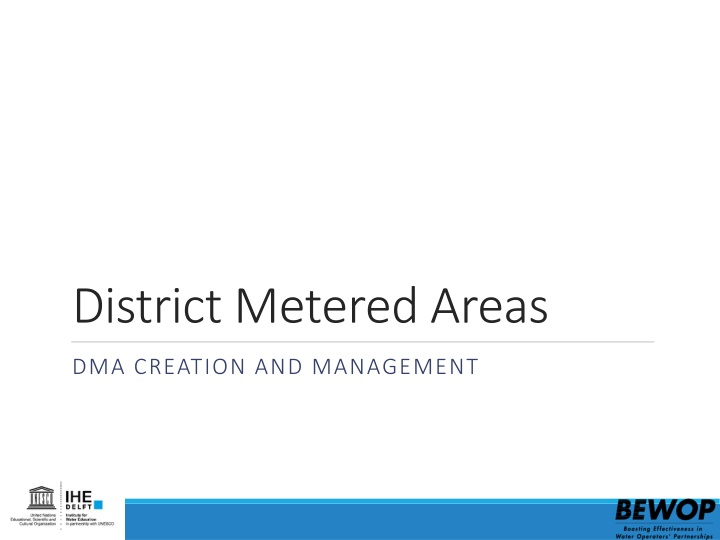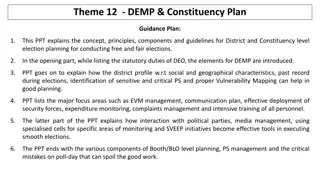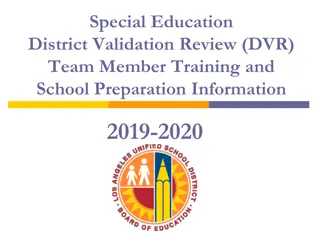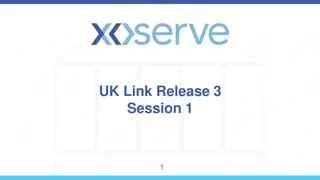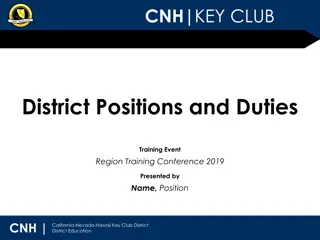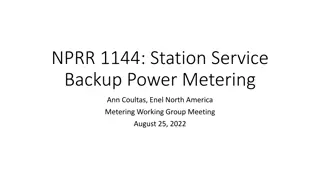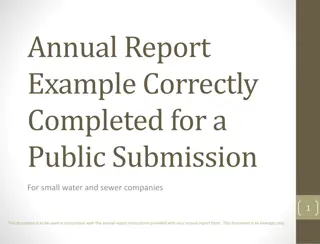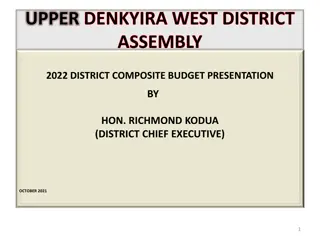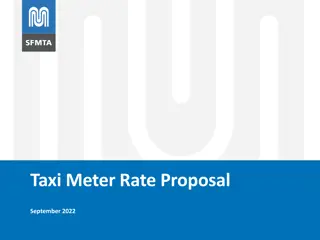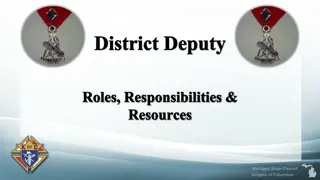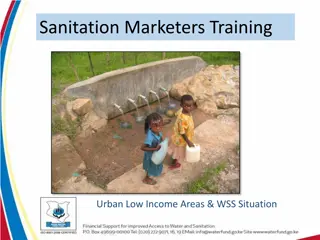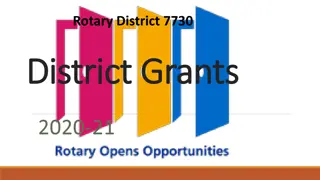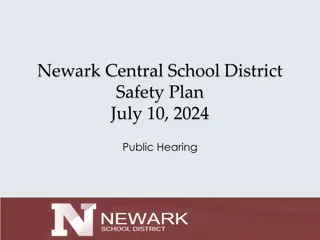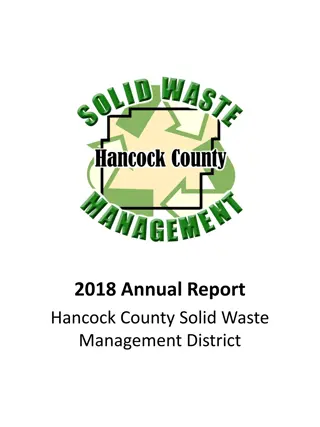District Metered Areas: Creation and Management Overview
District Metered Areas (DMAs) are essential for NRW management in water distribution networks. By isolating and monitoring specific zones, NRW levels can be analyzed effectively, leading to quicker results and reduced costs. Criteria for DMA creation include network knowledge, NRW areas, size considerations, easy isolation, and water availability. Isolating a DMA involves verifying GIS data, installing meters and valves, and ensuring customer connections are accurately identified.
Download Presentation

Please find below an Image/Link to download the presentation.
The content on the website is provided AS IS for your information and personal use only. It may not be sold, licensed, or shared on other websites without obtaining consent from the author.If you encounter any issues during the download, it is possible that the publisher has removed the file from their server.
You are allowed to download the files provided on this website for personal or commercial use, subject to the condition that they are used lawfully. All files are the property of their respective owners.
The content on the website is provided AS IS for your information and personal use only. It may not be sold, licensed, or shared on other websites without obtaining consent from the author.
E N D
Presentation Transcript
District Metered Areas DMA CREATION AND MANAGEMENT
Contents Contents Introduction DMA Creation DMA Management 2
District Metered Areas A District Metered Area (DMA) is a hydraulically isolated and completely metered section of the complete water network 4 INTRODUCTION
DMAs for NRW management To be able to analyse the level of NRW, the problem should be divided into manageable pieces. By creating DMAs as NRW reduction/management pilot areas, NRW can be analysed in more detail and the effect of NRW reduction measures monitored Furthermore, a DMA serves as a good tool to make a business case for NRW reduction, because it allows for: Faster results (in comparison to working with the complete network) Action even when the company is not yet fully supportive of the approach, as a smaller investment and number of staff is needed The creation of commitment to NRW management by showing quick results in a small area Less investment costs 5 INTRODUCTION
DMA selection criteria For the creation of DMAs, the water distribution network should be sectioned in hydraulically isolated and separately measured zones. Important criteria for selecting a DMA include: Knowlegde of network and assets: (verified) GIS data is essential High NRW area (commercial and/or physical losses) Not too big, not too small, plus/minus 500 connections Easy isolation (clearly visible topographical points that can serve as boundaries for the DMA, such as rivers, roads, railway tracks, etc.,) which helps to: Save in investment costs Make it easier to identify the customers connected in the zone Ideally, water availability 24/7 and good pressure.(a lack of water and low pressure levels undermine the reliability of the meter readings) No immediate plans for network changes 7 DMA CREATION
DMA creation To isolate the DMA, it is required to: Further verify the GIS data Install meters and valves in tamper-proof chambers on all incoming and outgoing lines Verify, by closing the valves on incoming lines and checking whether or not customers still receive water, which customers are located in- or outside of the DMA. This exercise will reveal: Whether the GIS has captured the network as it truly is Which customers should be in or excluded from the DMA s customer base Results from water balance calculations can also indicate (for instance by showing particularly high or low NRW) incoming or outgoing lines that were left out and still need to be disconnected or metered. 8 DMA CREATION
Assets to install Valve To be able to close the DMA (and verify whether it is hydraulically isolated) Bulk water meter Measures the quantity of water flowing in and out of the area Strainer (before the water meter) To collect the dirt out of the water main and protect the water meter Straightener?????? Bring back the turbulence in the water Valve before or after meter, at what distance???? Etc 9 DMA CREATION
3. DMA Management
Caretaker approach A caretaker is: Responsible for the supervision of NRW reduction plans and activities in a specified service area, including standard operating procedures such as: Opening/closing the boundary valves (DMA must always be closed) Network planning Leak detection and repair Monitoring the quality of repairs and installation of new house connections Execute preventative maintenance programmes Water meter calibration (and necessary replacement) The search for illegal connections The eyes and ears of the water company in this area A point of reference for the customers in this area Informing customers on network activities Taking note of and action on - customer complaints Report on experience in the area (NRW, customer satisfaction, illegal connections, repair, maintenance and needed materials, etc.) to a supervisor Advise the supervisor on management plans and activities that need third parties
What does a Caretaker need? A caretaker needs: A team (of plumbers, meter readers, GIS specialist etc.) with whom the activities in the area can be performed To be given due status and autonomy to be able to steer his team To be given (timely) access to needed materials and people to be able to perform the planned activities in the area Experience with NRW and leading a team To be held accountable
